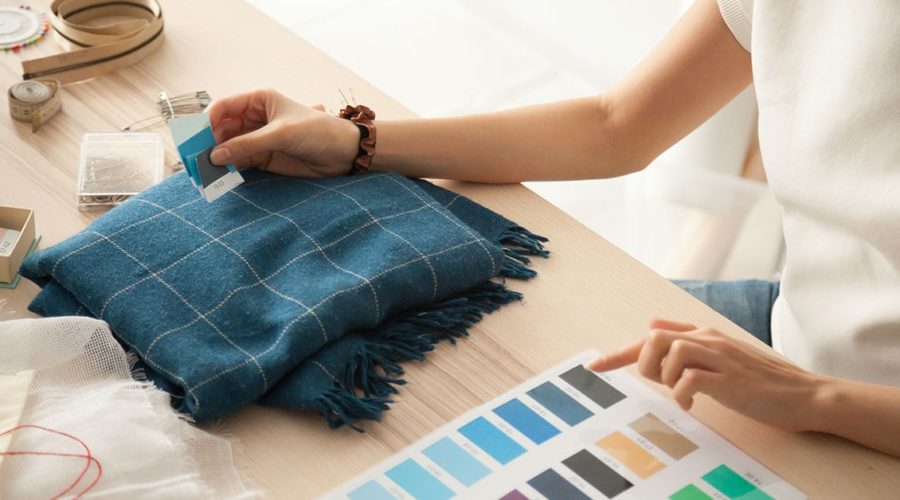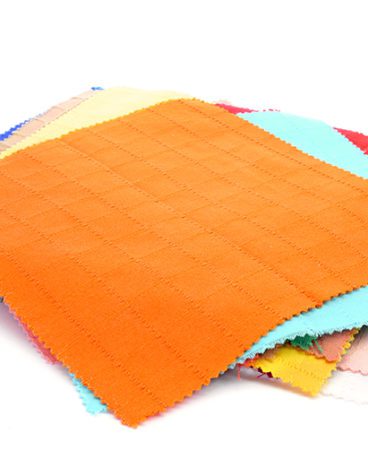This is a guest blog from Dory Newman, Owner of Color Remedy Consulting. Over the course of her career, Dory has been involved in the color programs of Talbots, Coldwater Creek, Macy’s, Ann Inc. and Ascena Retail Group. Now, at Color Remedy Consulting, she pulls from 20 years of industry experience to help companies optimize their approach to color management.
Vendor Empowerment Programs Make Production More Efficient
If you work in the textile industry, you’ve likely heard the term “vendor empowerment”. You may even be thinking about a vendor empowerment program right now. Wherever you stand, and especially if you’re using digital technology to manage colors, vendor empowerment is something that should be on your radar.
Vendor empowerment is all about allowing your vendors to approve color on your behalf. And while it requires a lot of trust, the payoff is significant: by moving your approvals closer to the source, it makes production go much quicker and saves your company time and money.
Here’s what you should know about successful vendor empowerment.
The Relationship Between Brands and Vendors Has Changed Over Time
Early in my career, brands and their overseas partners didn’t work as closely as they do today. Color associates never traveled and they never got to meet vendors in person. I truly believe that makes such a difference. Right now, we’re at a time of virtual meetings, but hopefully in the future we’ll be able to see each other again.
It makes a huge difference in your color program to be able to trust somebody on the other side of the world and to have that close working relationship. Without this, it’s difficult to predict (and therefore control) what the results of your color decisions will be.
That said, I still think we have a long way to go before vendor empowerment is the norm for all brands. I also know it takes time and effort to make a vendor empowerment program work smoothly. And it takes commitment from both sides to make it happen.

Getting the Right People On Board
It’s so important for vendors to have the right people in-house. Many times, vendors have a QA manager that’s also taking care of color and only wants tests to pass. They’re less concerned about the color and only care about the surface of the fabric, for example. Vendors really need a trained colorist to manage that process for their customers.
In turn, brands need to have trained colorists that can communicate with overseas partners. They also need opportunities for close communication to happen, whether it’s travel overseas or, right now, calls to check in and cultivate that relationship.
Senior management needs to be a proponent of vendor empowerment, too. Without it being an executive priority, things don’t always end up making it to the finish line.
When Is the Right Time to Align Your Vendors with a Color Program?
The right time to focus on vendor empowerment depends on what personnel you have. If you have a colorist who is just learning what to do, it’s probably not the best to start an alignment study with your vendors. Instead, you’ll want to get your team trained, set up and confident. Once that happens and you feel that you have a good colorist and a good team, you can extend it to outside the organization.
The way I’ve worked with vendor empowerment is in a phased approach. You start, for example, approving solid bulk and do training with your mill. You take a trip, meet the people, and work with them one-on-one. I’ve been in so many different light boxes around the world. That’s when you get to show vendors what you’re looking for and show them your technique with measuring.
By starting off small and not just giving vendors everything to approve, the risk is lower. Vendors can get comfortable and brands can start to move onto the next phase of approvals once everybody is ready.
The Biggest Mistakes I See with Vendor Empowerment
I’d caution against starting off too fast and giving vendors too much. That creates a lot of problems because they aren’t able to learn and build confidence with their approvals.
Another mistake I see is a lack of clear communication within a brand’s internal team. Vendor empowerment depends on letting the team know who is empowered and who isn’t. This could be done by storing a chart on a shared drive or having a meeting to let everyone know where you are with vendors.
It can be easy for color teams to be left out of the loop. You don’t want to spend months and months training a mill to be empowered only to learn your company isn’t doing business with them anymore. It sounds extreme, but it can happen. That’s why communication between colorists and your sourcing team is key for vendor empowerment.
The third mistake is not being able to travel and build that trust. You need to let vendors know that they’re a part of your team. That’s often overlooked because the color teams tend not to be able to travel since it’s not in the budget. To me, that’s a mistake.

Maintaining Great Vendor Relationships Over Time
Strong vendor relationships require consistent work and holding vendors accountable. Even if approvals move off of a colorist’s plate, they still need to keep track of how vendors are doing and be a part of the conversation on where to source products. They can tell the sourcing team that the approval rate of a certain mill is x percent or that a mill has been doing a great job. They can also communicate when there’s room for improvement.
You want to make sure vendors are doing the best approvals possible for you. You want to continually reinforce that they’re part of your team. In the absence of travel, schedule video calls, check in via email, and make sure they’re always connected.
There may also be times when you’ll need to reevaluate your vendor empowerment program. The biggest problem I’ve seen is colorist turnover on the vendor side. Many times, the colorist role overseas is not as prestigious as it is in the United States. So, if a mill is always letting you know that their colorist left and introducing you to a new colorist, it may be time to reevaluate if you want to do an empowerment program with that mill.
Can I Really Shift All (Or Most) Approvals to My Vendors?
This is absolutely possible and I’ve gotten to this place in my career before. We would advise vendors of the color standards we wanted and they would take it from lab to bulk to shade lots and just send in references. When they had issues, they made them clear to my team. We were there to support as needed, but they really managed the whole process.
The time savings were dramatic. Your team on this side of the world is no longer drowning in work and can give other parts of their job the attention it deserves. It also frees up time to train other vendor colorists.
In addition, you can make room for different and bigger challenges, like matching five different laces. Maybe you wouldn’t trust a vendor to do that, but a colorist can concentrate on matching five different turquoise laces coming in from five different countries.
I know that a lot of companies struggle with vendor empowerment. But I truly believe that as soon as you get your color program set up domestically or internationally, it’s time to look at your vendors and say “who can help there?” If you trust your vendors to do other things for you, you should trust them to do your color approvals. The best thing you can do is make your process as efficient as possible and move approvals closer to the source.







